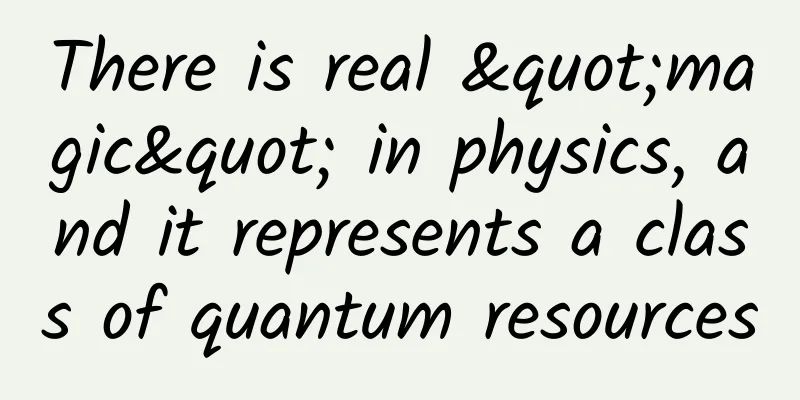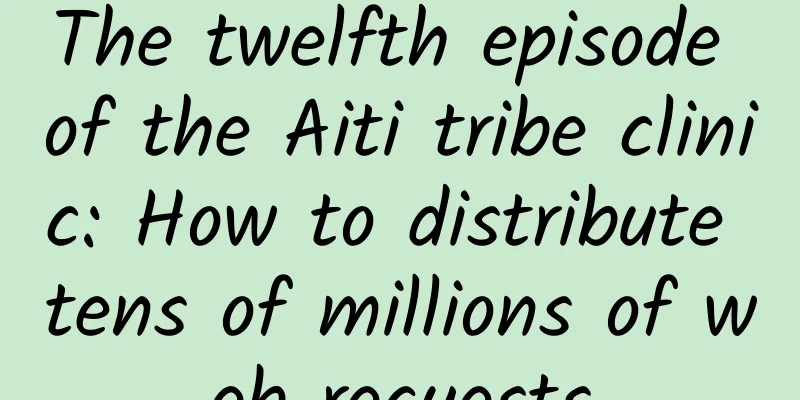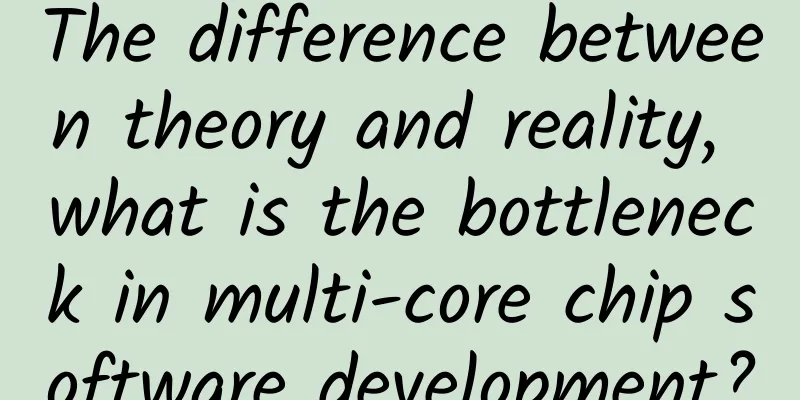There is real "magic" in physics, and it represents a class of quantum resources

|
There is indeed "magic" in physics, but the magic to be introduced here does not refer to magical phenomena in physics, but to the concept in quantum resource theory, which is a necessary non-classical resource for realizing universal quantum computing and quantum advantage. In recent years, many studies have focused on exploring the role of magic in quantum many-body systems, but for high-dimensional and large-scale non-integrable quantum many-body systems, there is still a lack of effective research tools. To fill this gap, this paper introduces an effective algorithm for calculating many-body magic. Written by Ding Yiming and Yan Zheng (Department of Physics, Westlake University) 01 Resource thinking Imagine that you live in a wonderful world where all food except milk is inexhaustible. In this world, milk is just like oil in the real world, an extremely precious resource. Therefore, any food containing milk is called "resource food", and food without milk is called "free food". As a talented gourmet, you have an extremely sensitive taste system that can instantly tell whether a dish is free food or resource food. Not only that, you can also accurately quantify the milk content in food. Going further, you can even analyze the distribution and structure of milk in food, and understand how these structures affect the color, aroma, and taste of food... By introducing this “resource concept” into the field of quantum information, we obtain the quantum resource theory[1]. In quantum resource theory, we no longer divide food, but quantum states. We will choose a certain quantum property as a standard and regard it as a quantum resource. In order to prepare or simulate a quantum state, if the quantum resource does not need to be introduced, then this state is called a "free state", otherwise it is called a "resource state". To give a simple example, if we regard quantum entanglement as a quantum resource, then the free state is a separable state (for pure states, it is a direct product state), and the resource state is an entangled state. At this time, the resource structure is reflected as an area law on the ground state of the local interaction Hamiltonian (the entanglement entropy increases linearly with the entanglement boundary), and its correction can reflect important quantum many-body properties such as degeneracy, Goldstone mode, conformal field central charge and topological order [2]. 02 The complexity of magical and quantum states The protagonist of this article, magic or non-stabilizerness, is an extremely important quantum resource. In this context, magic states or non-stabilizer states are resource states, while free states are stabilizer states. The motivation for considering magic as a quantum resource stems from the famous Gottesman-Knill theorem [3]: Under the Clifford quantum circuit, any stable state can be prepared and simulated on a classical Turing machine with polynomial resources. In order to achieve universal quantum computing or exert quantum advantage, it is far from enough to be able to prepare stable states (all stable states only constitute a subspace of the complete Hilbert space). To do this, we must introduce quantum operations that can produce magic, such as quantum T-gates. A surprising fact is that many highly entangled quantum states are not magic states [4]. If a classical system can completely simulate the entire behavior of another quantum system within polynomial resources, is this quantum system still "quantum" enough? The answer to this question is still open. Due to difficulties in complexity theory, the strict relationship between the complexity classes of P (easy to solve by classical computers), NP (difficult to solve by classical computers but easy to verify), BQP (quantum version of P) and QMA (quantum version of NP) has not yet been clarified, but this inspires us to regard the complexity of quantum states as one of their important physical properties, just like entanglement. Since any quantum system can be regarded as evolving from a trivial initial state at a certain point in the past, quantum complexity, as the result of possible historical evolution, has the potential to characterize some important properties beyond entanglement. This view coincides with Leonard Susskind's statement that "entanglement is not enough" when studying black hole physics in 2014 [5]. In fact, magic is not strictly equivalent to the quantum complexity we are discussing, because not all magic states cannot be prepared by classical computers with polynomial resources. For example, the ground state of the Hamiltonian without sign problems can be effectively simulated by Monte Carlo methods, and they usually have non-zero magic. In addition, the magic size of a quantum state is not independent of the choice of basis (similar to the sign problem). Nevertheless, as an important "battlefield" of quantum many-body complexity, the study of magic is extremely important and urgently needs to be carried out. In recent years, more and more researchers have devoted themselves to the study of many-body magic. Many important results on magic have emerged in the fields of criticality, quantum chaos, AdS-CFT, etc. However, for high-dimensional and large-scale non-integrable quantum many-body systems, we still lack effective research tools. A recent work fills this gap - we proposed an effective Monte Carlo algorithm for calculating the many-body magic value and its derivatives, and used it to study criticality, volume rate (magic increases linearly with the size of the system) and non-local magic [6]. 03 Stable Entropy and Derivative of the Transverse Field Ising Model Just as there are many physical quantities that can characterize quantum entanglement, there are also many quantities that characterize magic. The physical quantity of magic we consider here is the second-order stabilizer entropy , which is a good measure that satisfies monotonicity under the Clifford scheme for pure magic [7]. In the language of random series expansion and imaginary time path integral, it corresponds to the following manifold (Figure 1). Figure 1: There are four replicas in the figure above. In each replica, the vertical axis represents the spatial degrees of freedom (for example, the first grid point), and the horizontal axis represents the temporal degrees of freedom. The state of each grid point is acted upon in sequence by the Pauli String composed of operators and other Hamiltonian-related operators, and evolves on the time axis. The left and right arrows on the time axis indicate that time is periodic, that is, the final state after all operators have evolved is the same as the initial state. In fact, simulating such manifolds will produce some sign problems (negative probabilities). One of the core points of our work is to use the symmetry of the Pauli group to transform the simulation of the above manifold into a problem of sampling the reduced Pauli String in the reduced configuration space, thereby eliminating the sign and further calculating the value and derivative of the stable entropy. In this work, we mainly discuss the ground state of the 1D and 2D transverse field Ising models. There are pictures, the default left sub-picture is the result of 1D, and the right sub-picture is the result of 2D) as the behavior of the parameter J and the number of grid points N changes. For the 1D model, the magic reaches the maximum value at the phase transition point, which is similar to many traditional physical quantities. Readers may think that the maximum value is caused by the divergence of the correlation length at the phase transition, but we further studied the 2D system and found that the maximum value exists inside the ferromagnetic phase rather than at the phase transition point. This is a very interesting result, telling us that the phase transition point is not necessarily more difficult to simulate on a classical machine than some simple phases. On the other hand, it also tells us that even for the same physical phase (breaking the same symmetry), some changes in details will greatly change the simulation resources.
In fact, since the system itself has a second-order phase transition, and the part of the stable entropy density contributed by free energy naturally contributes to the singularity, it is difficult to determine whether the many-body magic of the system can be directly related to criticality. Fortunately, our method allows the separation of the trivial contribution from free energy (Z part), leaving the characteristic function contribution (Q part) that is more closely related to magic. Surprisingly, we found that whether it is a 1D or 2D transverse field Ising model, the non-trivial Q part has singularity (as shown in Figure 4). Furthermore, the singularity of the second-order derivative of the stable entropy density is the result of the combined effect of partial and partial singularities. Figure 4: Competition between the trivial Z part and the magic-related Q part of the second-order derivative of the stable entropy density in 1D (left) and 2D (right). The results in Figure 4 also suggest that for general quantum many-body systems, magic does not necessarily reach its extreme at the (conformal) critical point. Its behavior may be complex and diverse, and is closely related to the order of phase transition. 04 Non-local magic When we discuss the global (whole system) magic of a quantum state, it may be trivial. For example, if a quantum state is the tensor product of N local magic states, then the volume ratio of magic is strictly satisfied (global magic is composed of local magic), and it does not make much sense to discuss the size of global magic. For example, when we consider the following Phase GHZ state
Where F is the magic metric of the mixed state. Since stable entropy is not a legal magic metric of the mixed state, there are limitations in defining mutual magic by stable entropy. However, as we discussed above, non-local magic will inevitably be reflected in the volume rate correction of stable entropy, which is an important point that has been ignored in previous studies. In the thermodynamic limit, any local magic contribution will inevitably be absorbed by the coefficient of the volume rate. In the finite size, the volume rate corrections on both sides of the phase transition point are generally different because the magic structures brought by the correlations on both sides are also different. By fitting the correction terms b1 and b2 of the 1D and 2D models, we found that they show signs of extreme values and discontinuities at the phase transition point (see Figure 5), and the magic structures on both sides of the phase transition point are also different. In other words, although the global magic is not necessarily the largest at the phase transition point because it is dominated by the local magic, the non-local magic is drastically affected by the divergence of the correlation length at the phase transition point. In fact, it is difficult to imagine that these non-local magics can be obtained by a small number of quantum gate operations. Therefore, we speculate that the correction of volume rate is a far more meaningful physical quantity than the magic of global quantum state. Figure 5: Volume rate correction of stable entropy in 1D (left) and 2D (right) systems. 05 Conclusion In the past few hundred years of exploration, physicists have gradually realized that information is physical in nature and plays a vital role in quantum many-body physics. However, the discussion of the complexity of physical systems related to computing, especially quantum complexity, is still relatively limited. With the continuous development of quantum information science, we have reason to believe that starting from the perspective of computational science will help us to have a deeper understanding of complex and interesting quantum behaviors in the future. References [1] E. Chitambar and G. Gour, Quantum resource theories, Rev. Mod. Phys. 91, 025001 (2019). [2] N. Laflorencie, Quantum entanglement in condensed matter systems, Physics Reports 646, 1 (2016). [3] S. Aaronson and D. Gottesman, Improved simulation of stabilizer circuits, Phys. Rev. A 70, 052328 (2004). [4] MA Nielsen and IL Chuang. Quantum Computation and Quantum Information: 10th Anniversary Edition. Cambridge: Cambridge University Press (2010). [5] L. Susskind, Entanglement is not enough, Fortschritte der Physik 64, 49 (2016). [6] Y.-M. Ding, Z. Wang, Z. Yan. Evaluating many-body stabilizer Rényi entropy by sampling reduced Pauli strings: singularities, volume law, and nonlocal magic. arxiv:2501.12146 [7] L. Leone, SFE Oliviero, and A. Hamma, Stabilizer Rényi entropy, Phys. Rev. Lett. 128, 050402 (2022). [8] CD White, C. Cao, and B. Swingle, Conformal field theories are magical, Phys. Rev. B 103, 075145 (2021). Special Tips 1. Go to the "Featured Column" at the bottom of the menu of the "Fanpu" WeChat public account to read a series of popular science articles on different topics. 2. Fanpu provides a function to search articles by month. Follow the official account and reply with the four-digit year + month, such as "1903", to get the article index for March 2019, and so on. Copyright statement: Personal forwarding is welcome. Any form of media or organization is not allowed to reprint or excerpt without authorization. For reprint authorization, please contact the backstage of the "Fanpu" WeChat public account. |
>>: An asteroid may hit the Earth in 7 years? Don't be afraid, it's not the first time...
Recommend
OPPO Find7 User Experience
I have used the Fan 7 for 3 days. I want to write ...
How do Xueersi, Yuanfudao, Zuoyebang, etc. operate short videos?
Previously, in the future of "Education + Sh...
Xiaomi, on the eve of a breakout or on the brink of falling?
"Good student" Xiaomi handed in a finan...
The Heavenly Palace selected the twelve zodiac animals. The one who overslept was not the cat, but...
In Chinese folklore, there is a story that is wel...
Which industries are suitable for information flow?
Question 1: I have a question: Regarding the prob...
Sony is relaunching the AIBO robot dog after 12 years of discontinuation. This is a combination of "past + future"
In 1999, Sony released a companion robot, AIBO, w...
Will capital be defiled when it enters the pure holy land of the second dimension?
Recently, major news platforms almost simultaneou...
What is the algorithm of Tik Tok’s recommendation mechanism?
The reason why Tik Tok is so popular is definitel...
Hejun's Strategic Thinking Course (Issue 24)
Hejun's Strategic Thinking Course (24th Issue...
What is "fighting fire with fire"?
As of 8:30 a.m. on August 26 Through joint effort...
New energy vehicle production capacity is overheated, 10 times the sales volume
New car-making forces have entered the mass produ...
98sjw Catering Franchise Website Analysis Report
1. Keyword analysis The keywords of 98sjw caterin...
How much does it cost to invest in Nanchong’s marriage and love mini program?
How much is the investment cost for Nanchong Marr...
Apple releases iOS 11.4 beta 2 with more than just ClassKit
Recently, Apple released iOS 11.4 beta 2. Two wee...
Why is it said that the first FDA certification of this expensive blood glucose monitoring device brings hope to the industry?
Recently, Medtronic's MiniMed 670G has sudden...









